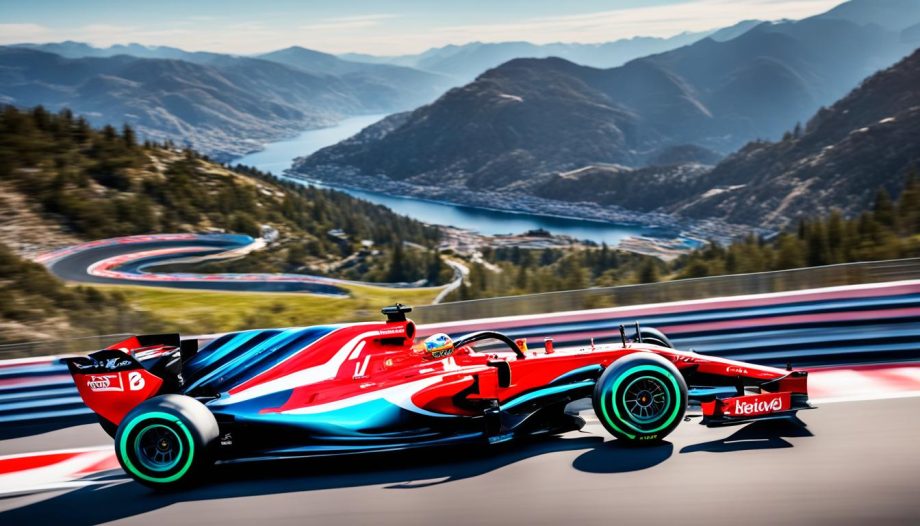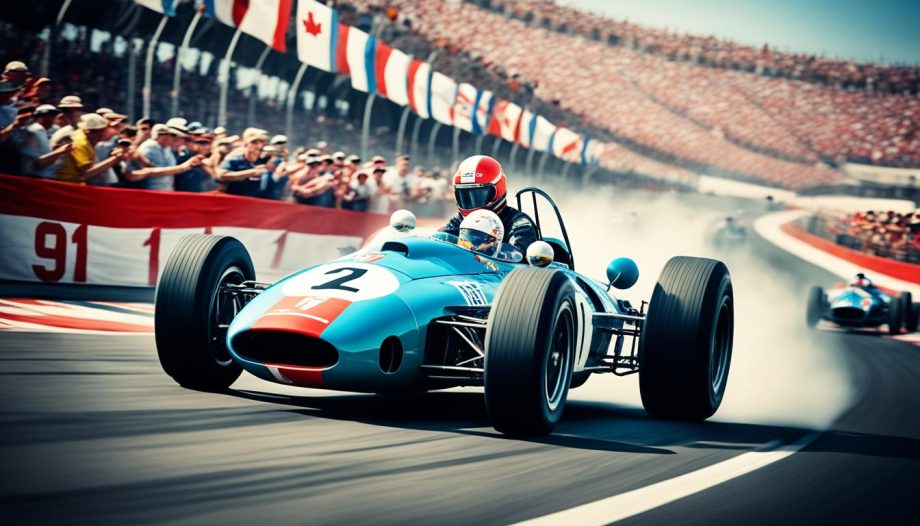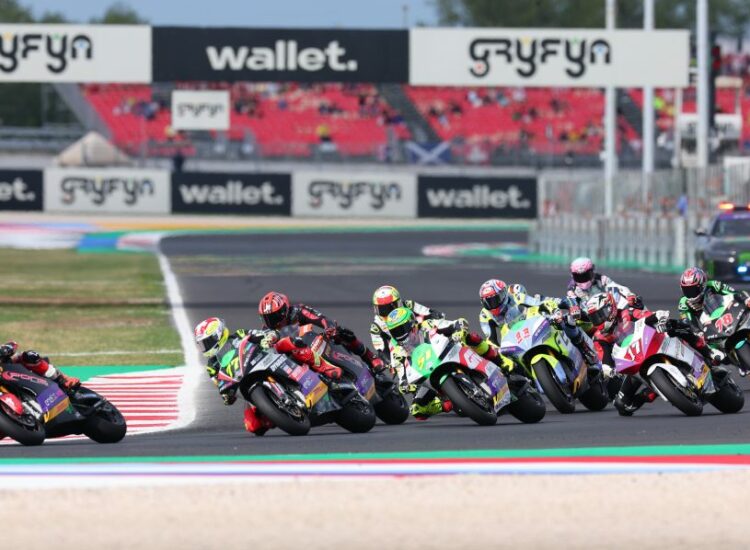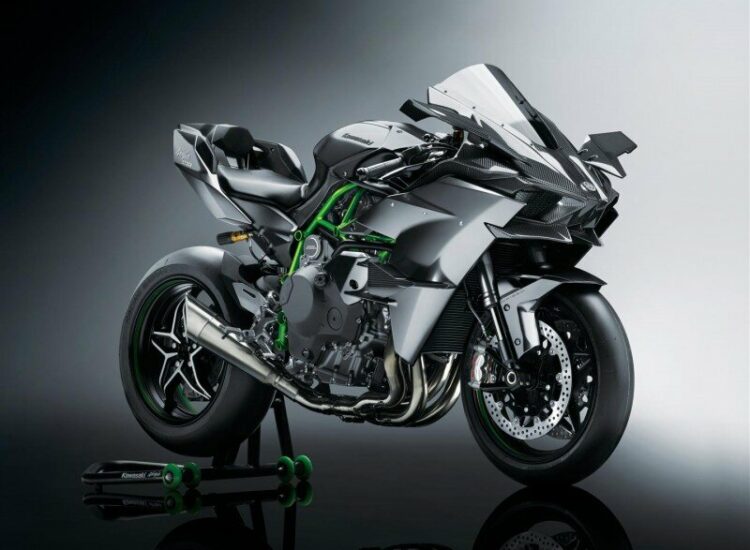Formula 1: The Pinnacle of Motorsport
Formula 1, often abbreviated to F1, stands as the undisputed pinnacle of motorsport. A global spectacle that combines cutting-edge technology, human skill at its limits, and intense competition, Formula 1 captivates audiences worldwide. This essay delves into the world of Formula 1, exploring its history, technology, key figures, and enduring appeal.
A Rich History: From Post-War Origins to Global Phenomenon

The roots of Formula 1 can be traced back to the European Grand Prix motor racing championships of the pre-war era. However, the official Formula 1 World Championship was established in 1950, with the first race held at Silverstone, UK.
The early years of Formula 1 were dominated by legendary drivers like Juan Manuel Fangio and Stirling Moss, who pushed the boundaries of speed and skill in rudimentary machines. The sport gradually evolved, with technological advancements leading to faster cars and increased safety measures.
The 1960s and 1970s saw the rise of iconic figures like Jim Clark, Jackie Stewart, and Niki Lauda, who became global superstars. The sport’s popularity continued to grow, with television broadcasts bringing the excitement of Formula 1 to millions of viewers worldwide.
In the modern era, Formula 1 has become a truly global phenomenon, with races held on iconic circuits across continents. Drivers like Ayrton Senna, Michael Schumacher, Lewis Hamilton, and Max Verstappen have achieved legendary status, captivating audiences with their exceptional talent and fierce rivalries.
Technological Marvels: Engineering at the Cutting Edge
Formula 1 cars are technological marvels, representing the pinnacle of automotive engineering. These machines are designed to push the boundaries of performance, with every component meticulously crafted to optimize speed, aerodynamics, and efficiency.
-
Aerodynamics: The aerodynamic design of Formula 1 cars is crucial for generating downforce, which allows the cars to corner at incredibly high speeds. Wings, diffusers, and other aerodynamic elements are constantly being refined to maximize downforce and minimize drag.
-
Engines: Formula 1 engines are highly sophisticated power units, capable of producing immense horsepower while maintaining fuel efficiency. The current hybrid power units combine a turbocharged internal combustion engine with electric motors to deliver exceptional performance.
-
Tires: Formula 1 tires are specifically designed to withstand the extreme forces generated during races. Different tire compounds are used to optimize performance in varying weather conditions and track surfaces.
Related articles 01:
3. https://toprunracing.vn/ayrton-senna-brazils-immortal-racing-legend
4. https://toprunracing.vn/huyen-thoai-toc-do-nhung-tay-dua-o-to-lung-danh-nhat-trong-lich-su
5. https://toprunracing.vn/the-apex-of-automotive-opulence-three-supercar-breeds-coveted-by-the-elite
-
Materials: Lightweight and high-strength materials, such as carbon fiber and titanium, are extensively used in Formula 1 car construction to minimize weight and maximize strength.
The Human Element: Drivers and Teams
While technology plays a crucial role in Formula 1, the human element remains paramount. The drivers are elite athletes, possessing exceptional reflexes, mental focus, and physical endurance.
-
Driver Skill: Formula 1 drivers must master the art of car control at extreme speeds, making split-second decisions while navigating complex circuits and battling wheel-to-wheel with competitors.
-
Teamwork: Formula 1 is a team sport, with drivers relying on the expertise of engineers, mechanics, and strategists to optimize car performance and make crucial race-day decisions.
The Spectacle of Formula 1: Global Appeal and Entertainment

Formula 1 is more than just a race; it’s a global spectacle that combines sport, technology, and entertainment. The races are held in iconic locations, attracting millions of viewers worldwide.
-
Global Reach: Formula 1 races are held on circuits across continents, from Monaco to Monza, from Silverstone to Singapore. This global reach contributes to the sport’s widespread appeal.
-
Media and Entertainment: Formula 1 is extensively covered by media outlets worldwide, with television broadcasts, online streaming, and social media engagement bringing the action to fans globally. The sport has also been the subject of popular documentaries and films, further increasing its visibility.
-
Glamour and Celebrity: Formula 1 attracts a glamorous following, with celebrities and high-profile individuals often attending races. This adds to the sport’s allure and contributes to its image as a prestigious event.
Beyond the Track: Formula 1’s Impact

Related articles 02:
1. https://toprunracing.vn/the-most-prestigious-motorcycle-racing-competitions-in-the-world
2. https://toprunracing.vn/ayrton-senna-brazils-immortal-racing-legend
3. https://toprunracing.vn/the-apex-of-automotive-opulence-three-supercar-breeds-coveted-by-the-elite
4. https://toprunracing.vn/huyen-thoai-toc-do-nhung-tay-dua-o-to-lung-danh-nhat-trong-lich-su
Formula 1’s influence extends beyond the racetrack, impacting various aspects of society and technology:
-
Technological Advancements: The relentless pursuit of performance in Formula 1 drives innovation, leading to advancements in automotive technology that often filter down to road cars.
-
Economic Impact: Formula 1 generates significant economic activity, creating jobs and boosting tourism in host countries.
-
Social Impact: Formula 1 drivers often use their platform to raise awareness for social causes and promote positive change.
The Future of Formula 1
Formula 1 continues to evolve, with new regulations and technologies shaping the future of the sport. Sustainability is becoming increasingly important, with efforts to reduce the environmental impact of the sport.
-
New Regulations: Formula 1 regularly introduces new regulations to promote closer racing, improve safety, and encourage technological innovation.
-
Sustainability: The sport is actively pursuing sustainable practices, including the development of more efficient hybrid power units and the use of biofuels.
-
Expanding Audiences: Formula 1 is constantly seeking to engage new audiences through initiatives like esports and fan festivals.
Conclusion
Formula 1 stands as the pinnacle of motorsport, a global spectacle that combines cutting-edge technology, human skill, and intense competition. Its rich history, iconic figures, and technological advancements have captivated audiences worldwide for decades. As the sport continues to evolve, embracing sustainability and engaging new audiences, Formula 1 is poised to remain a dominant force in the world of motorsport for years to come.









